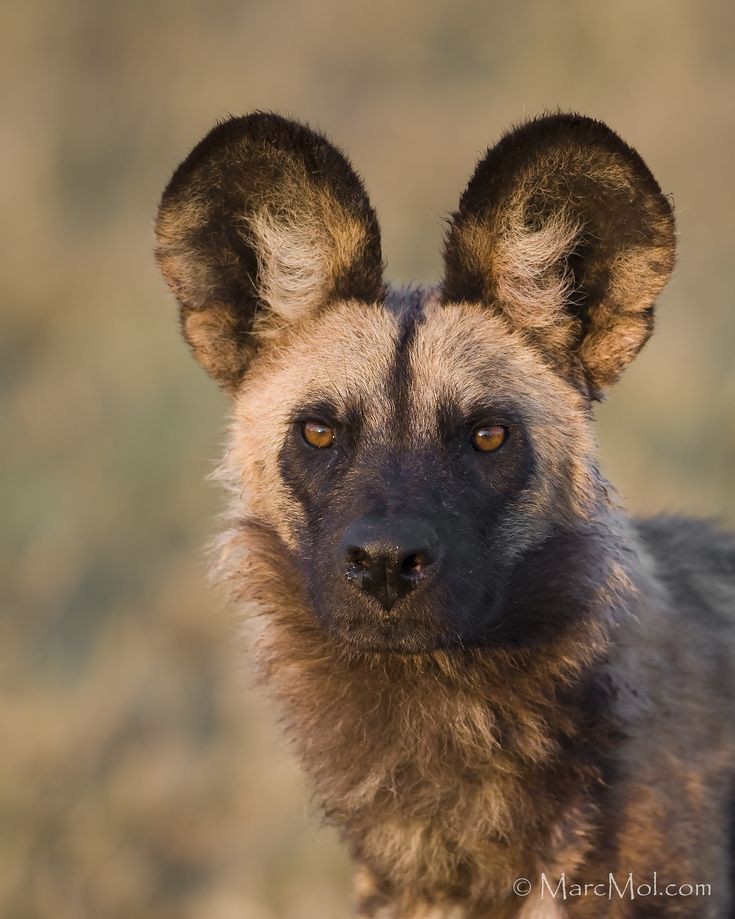The African wild dog (Lycaon pictus), also known as the painted dog or Cape hunting dog, is one of Africa’s most fascinating and endangered predators.
With its distinctively patterned coat and unique social structure, the African wild dog stands out among the continent’s wildlife.
This article delves into the African wild dog’s behavior, survival tactics, and challenges in the wild, focusing on its significance as both a predator and a threatened species.
A Dog by Any Other Name: The Painted Dog’s Striking Appearance
The African wild dog has a remarkable coat of fur, mottled with patches of red, black, brown, white, and yellow.
No two wild dogs have the same markings, making each one as unique as a human fingerprint or a zebra’s stripe pattern.
These markings are not just for aesthetic appeal; they also play a crucial role in the dog’s camouflage and survival in the wild. This unique appearance is why they are often referred to as “painted dogs.”
Satellite Ears: Detecting Prey from Afar
One of the African wild dog’s standout physical features is its large, rounded ears that resemble satellite dishes. These ears are highly specialized, allowing the dogs to detect minute sounds from miles away.
Their auditory system is key to tracking prey across vast landscapes, giving them an advantage over other predators.
Fewer Toes, Faster Sprints: African Wild Dog’s Unique Foot Structure
Unlike domestic dogs, the African wild dog only has four toes per foot. This might seem like a small detail, but it has a significant impact on their speed.
These four-toed feet are highly adapted for sprinting, allowing wild dogs to run at speeds of up to 44 miles per hour.
This speed makes them one of the most efficient hunters in the animal kingdom, particularly in open plains where agility and endurance are essential.
Pack Mentality: A Social Structure Focused on Survival
African wild dogs are highly social animals that rely heavily on their pack for survival. Packs typically consist of 6 to 20 members and are led by a dominant alpha pair.
Within these packs, non-breeding adults often sacrifice their own nourishment to ensure the pups in the group are well-fed, creating a unique social system of cooperation and selflessness.
This altruism extends to the care of the sick, old, and disabled members of the pack, a trait that sets African wild dogs apart from many other predators.
Hunting in packs also gives them an impressive 80% success rate, making them one of Africa’s most efficient predators.
Top Predators: African Wild Dogs’ Hunting Success
With their high success rate in hunting, African wild dogs rank among the top predators in Africa, even surpassing lions in efficiency.
Their cooperative hunting techniques and ability to cover vast territories make them highly skilled at bringing down prey, including antelopes and wildebeests.
Despite their hunting prowess, African wild dogs face significant challenges from habitat loss, disease, and conflict with humans.
Only 6,600 wild dogs remain in the wild today, primarily in Tanzania, northern Mozambique, and parts of southern Africa.
Not Man’s Best Friend: Endangered Status of African Wild Dogs
The African wild dog is currently listed as endangered on the IUCN Red List due to threats such as habitat loss, human-wildlife conflict, and diseases like canine distemper.
With increasing human encroachment into their natural habitats, wild dogs often come into contact with livestock, leading to retaliatory killings by local farmers.
Efforts to conserve African wild dogs are ongoing, with several organizations working to protect their habitats and reduce human-wildlife conflicts.
Protected areas like Kruger National Park in South Africa and Serengeti National Park in Tanzania offer some of the best chances for these endangered predators to thrive.
SEO Keywords: endangered African wild dogs, wild dog conservation, IUCN Red List African wild dogs
Wide Ranges: African Wild Dogs Roam Vast Territories
African wild dogs are nomadic animals that cover large areas of land in search of prey. Their home ranges can span hundreds of square miles, particularly in the open plains and sparse woodlands of sub-Saharan Africa.
These large territories make it difficult to maintain a stable population, especially as human populations expand and encroach on their habitats.
Caring for the Pack: A Family-Oriented Lifestyle
In African wild dog packs, the alpha pair leads the group, and the entire pack takes on the responsibility of caring for the pups.
From guarding the young to regurgitating food for them after hunts, wild dogs exhibit a level of family cooperation that is rare among large predators.
This cooperative care ensures that the pups grow strong, securing the future of the pack.
African Wild Dogs: Rare Yet Fascinating Wildlife Sightings
For wildlife enthusiasts, seeing African wild dogs in the wild is a rare and special experience. Despite their endangered status, visitors to parks like Kruger National Park in South Africa, Serengeti in Tanzania, and Chobe National Park in Botswana have a relatively high chance of spotting these painted dogs.
Conclusion: Protecting the Future of African Wild Dogs
The African wild dog is one of Africa’s most iconic and endangered species. Their unique coat, social structure, and hunting efficiency make them a standout predator in the animal kingdom. However, their survival is at risk due to habitat loss and human interference. Conservation efforts remain crucial to ensuring the continued existence of these remarkable animals.
For more information on African wild dog conservation efforts, visit:
